I'll edit this question as I tackle your three remaining questions; Connor Wolf has done an excellent job of the rest.
Working backwards:
16) MCU-ATMEGA328P: ATMEGA328P-MURCT-ND 20MHZ vs. ATMEGA328P-15MZCT-ND 16MHZ? Is the 20MHZ a drop-in replacement for the 16MHZ?
1) The ATMEGA328P in your picture looks like a 32QFN package. The main important difference (the clock speed change is important, but doesn't really change much when doing a BOM) between your two selections is a package change, which for surface mount parts, is VERY important to get right. The first one you described (MURCT model) is the 32QFN package, which I believe is the package you require. I invite you to check the package information against your eagle library part package in order to confirm this. To do so, get the manufacturer's model number from the digikey page (ATMEGA328P-MUR, not the digikey model number which is often different). Then, look at the datasheet in the section "ordering information", for this model number. It will then have a package code that corresponds to that model, which you can then take to the "Packaging Information" section (usually next section in ATMEL datasheets). In that section you can see the physical layout of the chip with dimensions, etc. Use this to check against your eagle library part for this item, carefully. If all you have is the BRD and SCH, you can use a ulp file (eagle script file) in order to construct a eagle library file from your BRD/SCH. Google can tell you more about this.
You can use this process for nearly any IC type part, as they will usually have a variety of packages based on what your needs are, mainly either being space-efficient (VFQFN) or cost-efficient (SOIC). This is also how you get the packaging information for importing new parts into eagle when making new designs.
The second package (15MZCT model) is a physically smaller part, with an exposed pad on the underside (32-VFQFN), which i doubt is what you want, as it is nearly impossible to hand solder (unless you plan to get the board reflow soldered).
I suspect you got confused thinking these were similar parts because Digikey often puts misleading information in the 'description' field of ICs (They are both labeled as '32QFN', which is only partially true). Be sure to check the detailed information of each part. Also get in the habit of referring to parts by their manufacturer codes, not by their digikey codes, as this will help eliminate a LOT of confusion when looking at part datasheets (which you will do often in electrical design). Not to mention, if you were to buy the parts from say, element14 or mouser, you'd have no trouble searching for them there.
14) J1-3013: Still not sure what DigiKey part this would be?
2) J1 looks like it is a set of terminals for your positive voltage source and GND, so you can solder a pair of wires there in order to connect to your battery (or other voltage source). The cheapest way to do this is having it done by the PCB fab house (they drill holes and plate them), which seems to be what they did. So as far as I can see there is no need for any digikey part here.
10) D3-MBR120: 568-6504-1-ND vs. MBR120VLSFT1GOSTR-ND? The Schematic document has "MBR120". Any real difference?
3) Functionally no, they are both 20V 1A schottky diodes. They are, however, by different manufacturers. A quick look at the datasheets of each reveals that, even though they have different package codes, they are of similar size (ignoring manufacturing tolerances). Be prepared for ALOT of this in surface mount parts. Every manufacturer can have a different part code that refers to the same physical package. Not to mention, sometimes two part codes are not physically the same. For example, SOIC is usually pretty standard, EXCEPT when it comes to package width, which can vary between manufacturer. Never assume your eagle part corresponds with a particular manufacturer's part code; ALWAYS check the library part package against the datasheet package corresponding to the one you are ordering. This is something I had tons of trouble with when I was a newbie to surface mount.
OTHER NOTES
- I believe you have mixed up D3 and Q1. Easiest way to tell is to look at the number of terminals of each part on the schematic (though not always the correct way, some parts can have multiple unconnected pins for various reasons).
- Many of your links are 404ing, because digikey does not like it when you link the URL of searches. If you want to include URLs, make sure they are the part pages rather than a search page (URL starts with www.digikey.com/product-detail/).
- If running this off a battery pack, be wary when the battery begins to discharge. The voltage will drop off as the battery discharges; if the voltage goes below the minimum threshold for the ATMEGA328P (1.8V I believe), you will begin to see erratic behaviour as the noise margins begin to shrink past the design tolerances of the device. You can enable brownout detect in your code on the ATMEGA to prevent this. It will trigger a reset when the voltage reaches an unacceptable level. More info why this is good practice here
